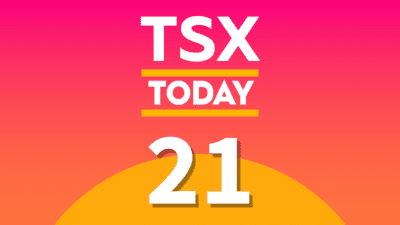Make no mistake about it: leverage is an amazing invention and has unquestionably been responsible for a great deal of the advancement of modern society. Without leverage, companies wouldn’t be able to borrow money to make investments in future production. Without leverage, the process of buying assets like a car or home for individuals would be a much more cumbersome.
Leverage is the act of borrowing money — or credit — against the value of an asset.
But while leverage is responsible for many of the things we are grateful for today, it can also lead to disastrous outcomes if not used properly.
Take Valeant Pharmaceuticals Intl Inc. (TSX:VRX)(NYSE:VRX) for example.
Valeant is a pharmaceutical drug company that eschewed the traditional model of spending money on research to develop new products. Instead, it opted to go out into the capital markets and outright purchase competing companies and with them, their established pipeline of soon-to-be-released drugs.
But that was an expensive endeavour, and one that ended up costing shareholders dearly.
As those who have fallen victim to over-indebtedness will already know all too well, when you find yourself in a highly leveraged situation and things don’t quite go your way, well, they really don’t go your way.
Essentially, Valeant found itself in a cash-crunch situation that ended up leading to a massive restructuring and the collapse of the company’s share price from a high of $350 all the way to below $15 at one point.
If Valeant is the epitome of leverage gone wrong, Dollarama Inc. (TSX:DOL) might, in fact, be a very good example of a company that has shrewdly taken advantage of the benefits offered by credit.
In the early part of this decade, Dollarama was a lot smaller than it is today.
At the time, the company had about a little over $1 billion of debt on its balance sheet compared to just $100 million in shareholders’ equity.
But as the company grew, it used the cash flow it was generating to pay down that debt. By 2013, it had managed to reduce its debt obligations to $262 million, while growing its shareholders’ equity to $931 million.
Having gotten its balance sheet in order, Dollarama then turned that strength into an opportunity, once again tapping into the capital markets to aggressively expand its store base.
Today, Dollarama is back to having $1.2 billion of debt on its books, similar to where it was eight years ago, but over that time the company has also impressively managed to grow its sales three-fold.
That is a shining example of exemplary capital management in action.
Conclusion
An evaluation of the level of debt in a company’s capital structure should be a critical component of any investment decision.
Sometimes, companies that employ levels of debt that are above the average of their peer group are automatically deemed “too risky,” but that can oversimplify the problem.
Then too, there are companies like Amazon.com, Inc. (NASDAQ:AMZN), Netflix, Inc. (NASDAQ:NFLX), and Shopify Inc. (TSX:SHOP)(NYSE:SHOP) that employ a high degree of leverage in their operations, but not financial leverage like debt; rather, the leverage is in the form of high fixed operating costs.
Either way, leverage in and of itself doesn’t make a company a bad investment necessarily, although, in many cases, it does add a certain element of risk.
Leverage can amplify losses — but also returns. Investors will want to take a close look at the company in question to see in what way the leverage is being used and what plan — if any — the company has to translate those fixed costs into future profits.
Stay Foolish.










